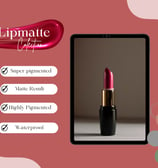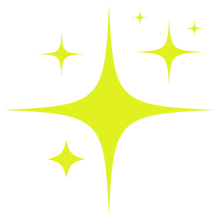This Website is still under maintance So Some Pages Might not Work.
Beautyai
Cryptocurrency Education & Investment Guidance App: UX/UI Design Proposal






Project Overview
Goal:
To create a modern beauty product app that caters to beauty enthusiasts by offering product discovery, personalized beauty recommendations, and educational content (tutorials, reviews, and trends). The app will combine social elements with e-commerce, allowing users to purchase products while staying updated on the latest beauty trends.
Target Audience:
Beauty enthusiasts (makeup, skincare, and haircare lovers).
Social media influencers and beauty bloggers.
People seeking personalized beauty products based on skin type, tone, and concerns.
Users looking for expert guidance and tutorials on how to apply or choose beauty products.
Business Goals:
To create a platform that bridges the gap between beauty product discovery and e-commerce.
Drive user engagement through personalized recommendations and interactive tutorials.
Offer a seamless shopping experience, increasing brand loyalty.
Foster a beauty community where users can exchange product reviews, tips, and inspiration.
Current Trends in Beauty Product Apps:
Personalization:
AI-driven personalization is increasingly important. Apps analyze users' skin types, tones, and preferences to recommend tailored products. Examples: Sephora's Color IQ or AI skin analyzers.AR Try-On Technology:
Augmented Reality (AR) lets users virtually try makeup and skincare products. Many apps integrate features like virtual mirrors for lipstick or foundation matching. Example: YouCam Makeup.Clean Beauty and Sustainability:
More consumers seek clean, organic, and cruelty-free products. Apps highlight ingredients, sustainability, and eco-friendly packaging, which appeals to environmentally conscious consumers.Beauty Tutorials and Community:
Users not only want to buy products but also learn how to use them. Apps often integrate video tutorials, influencer content, and user-generated reviews, creating a more interactive experience.Subscription Services:
Beauty subscription boxes are popular. Apps offering subscription models (for monthly product samples or curated boxes) can engage users long-term.User Reviews and Social Proof:
Social proof is essential for beauty consumers. Apps are focusing on providing user reviews, ratings, and the ability to share experiences within a community.
User Needs:
Personalized Recommendations:
Users seek beauty products that match their skin type, tone, and specific needs. Tailored suggestions based on user data or quizzes help them discover suitable products.Ease of Shopping:
Consumers want a simple, easy-to-navigate shopping experience with clear product descriptions, images, and user reviews. Having a convenient checkout and delivery process is crucial.Virtual Try-On:
Before purchasing, users want to see how makeup will look on them without physically testing it. AR-based try-on features help mitigate online shopping uncertainty.Educational Content:
Tutorials, beauty tips, and expert advice play a significant role in user engagement. Users want to learn how to apply products effectively and stay up-to-date with beauty trends.Community Interaction:
Social features, like reviews, user-generated content, and discussion forums, help users feel part of a beauty community, influencing their purchase decisions.


Design Process Chart
Research & Discovery:
Conduct user interviews and surveys to understand target audience needs.
Analyze competitor apps to identify strengths and gaps.
Define user personas and use cases.
Define & Plan:
Establish project scope, objectives, and deliverables.
Develop information architecture and sitemap.
Create user journey maps to outline user interactions.
Design:
Develop wireframes for key screens and user flows.
Create high-fidelity prototypes incorporating visual design elements.
Conduct usability testing with prototypes to gather feedback.
Development:
Collaborate with developers to implement UI designs.
Ensure design consistency and responsiveness across devices.
Integrate AI functionalities and ensure data security.
Testing & Iteration:
Perform beta testing with real users to identify issues.
Collect feedback and make necessary design adjustments.
Ensure compliance with regulatory standards.
Launch & Maintenance:
Deploy the app to relevant platforms (iOS, Android).
Monitor user engagement and performance metrics.
Continuously update content and features based on user feedback and market trends.


User Flow Chart:
Onboarding Flow:
Sign up or log in → Complete beauty quiz for personalized recommendations → View recommended products.
Product Discovery Flow:
Explore products by category → Filter products by concern (acne, anti-aging, etc.) → Virtual try-on → View product details → Add to cart or save to favorites.
Shopping Flow:
Add products to the cart → Proceed to checkout → Choose shipping and payment options → Confirm order.
Community Flow:
Post reviews and tutorials → Follow other users and influencers → Participate in live beauty discussions → Share routines.
Subscription Flow:
Subscribe to a beauty box → View monthly box contents → Provide feedback and reviews on received products.


Wireframe




HI-FI Prototype
Ideation: App Concept and Features
App Name: Glamora
(Combination of "glamour" and "flora" to emphasize beauty and natural elegance.)
Core Features:
AI-Powered Personalized Recommendations:
After completing a skin quiz (e.g., skin type, tone, concerns like dryness or acne), users receive customized product recommendations tailored to their unique beauty needs.AR Virtual Try-On:
A feature that allows users to test beauty products virtually. They can try different shades of makeup or see how skincare products would enhance their complexion.Product Discovery and Shopping:
A clean and intuitive interface where users can search and discover beauty products by category, ingredients, or skin concerns. Detailed product pages with high-quality images, descriptions, and user reviews.Sustainability Filter:
Users can filter products based on criteria like cruelty-free, vegan, eco-friendly packaging, and clean beauty ingredients.Beauty Community:
Users can create profiles, post reviews, and share their beauty routines. A social feed where users can see popular products, tutorials, and influencer beauty hacks.Live Tutorials and Expert Tips:
The app will feature live streaming beauty tutorials from influencers, skincare specialists, and makeup artists. Users can interact in real-time, ask questions, and purchase products featured in the tutorials.Subscription Box Feature:
Users can subscribe to receive monthly curated boxes with beauty samples based on their preferences and skin concerns. They can also review and rate the products they've received.Skincare Routine Tracker:
Users can log their skincare routine, track product usage, and set reminders for applying products. They can also track progress over time, seeing changes in their skin.Push Notifications:
Personalized beauty tips, restock alerts, sale announcements, and reminders for product reordering or subscription renewals.
